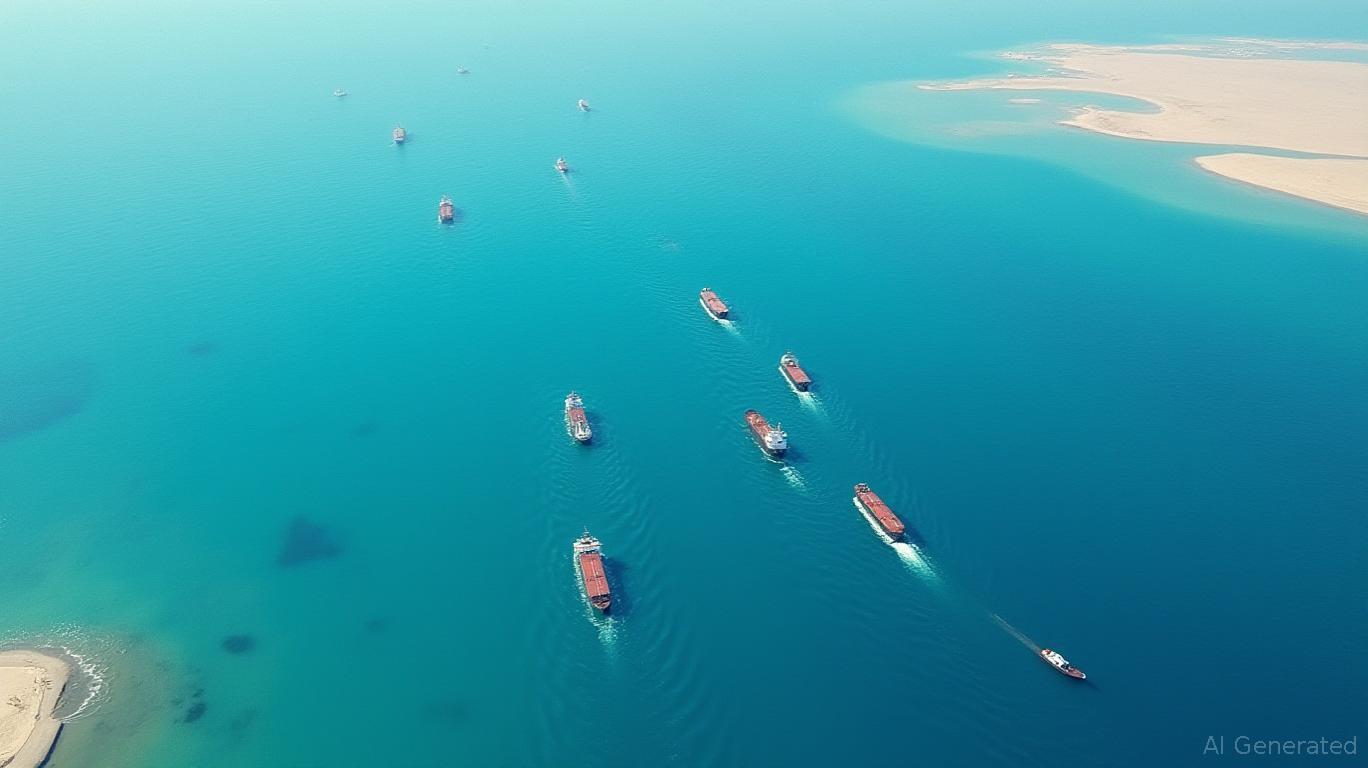How US-Iran Tensions Could Tip the Scales on the DAX: Navigating Geopolitical Risks and Fed Policy Crosscurrents
The simmering US-Iran conflict has escalated into a geopolitical tinderbox in June 2025, with profound implications for global energy markets and monetary policy. For investors in Germany's DAX index—a benchmark dominated by export-reliant sectors like automotive, machinery, and chemicals—the stakes are particularly high. A confluence of factors—oil price volatility, inflationary pressures, and delayed Fed easing—could destabilize the DAX, urging investors to rethink risk exposure.
The Geopolitical Flashpoint: Iran, Israel, and the Strait of Hormuz
The International Atomic Energy Agency's (IAEA) June 9 resolution declaring Iran non-compliant with nuclear safeguards marks a critical escalation. With 19 votes in favor and opposition from Russia, China, and Iran, the resolution paves the way for snapback sanctions. Meanwhile, Israel's June 12 preemptive strikes on Iranian military sites and Tehran's threats to retaliate by targeting U.S. naval assets in the Strait of Hormuz have already triggered ripple effects.

The Strait, through which 20% of global oil flows, faces heightened risk of disruption. Analysts warn that a full blockade could spike Brent crude to $90–$120 per barrel—a scenario that would amplify inflation and derail the Fed's path to rate cuts. Even without a closure, the mere threat of conflict has already pushed Brent to $76–77/bbl as of June 19, with traders pricing in a geopolitical premium.
Oil Prices: The $80 Threshold and DAX Vulnerabilities
The DAX's export-heavy composition makes it acutely sensitive to oil price movements. A sustained breach of $80/bbl—now within striking distance—would exacerbate input costs for German manufacturers. For instance, automotive giants like BMW and Daimler rely on stable energy prices to maintain profit margins, while industrial firms such as Siemens and chemical producers like BASF face rising logistics expenses.
Historically, oil price spikes correlate with DAX underperformance. In 2022, when Brent hit $120/bbl, the DAX fell 11% amid inflation fears. Today, with the IAEA resolution and military posturing, the risk of a repeat is real. Goldman Sachs' base-case $60–$65/bbl forecast for year-end hinges on no supply disruptions—a gamble few can afford.
Fed Policy: The Dovish Shift That Might Not Come
The Federal Reserve's June 2025 decision to hold rates at 4.25%–4.50% reflects its tightrope walk between cooling inflation and supporting growth. However, sustained oil prices above $80/bbl could force the Fed to delay the two rate cuts anticipated by year-end. J.P. Morgan warns that a $120/bbl scenario would push U.S. CPI to 5%, reigniting inflationary pressures and constraining monetary easing.
For the DAX, this is a double-edged sword. Higher rates would strengthen the dollar, hurting German exporters' competitiveness abroad. Conversely, delayed rate cuts could prolong a low-growth, high-inflation “stagnation” environment—a toxic mix for equity valuations.
Investment Strategy: Hedging Against Geopolitical Volatility
The DAX's structural exposure to global trade and energy costs demands a defensive posture:
- Reduce Equity Exposure: Underweight the DAX or use inverse ETFs (e.g., DB_XDAX) to short the index.
- Hedge with Energy Commodities: Buy Brent crude futures or ETFs like USO to offset oil-driven inflation risks.
- Safe-Haven Plays: Allocate to gold (e.g., GLD) or German government bonds (DBXE) to insulate portfolios from volatility.
- Sector-Specific Caution: Avoid energy-sensitive stocks. Instead, favor defensive sectors like utilities or healthcare, which are less exposed to oil price swings.
Conclusion: A Volatile Summer Ahead
The US-Iran conflict has shifted from a simmer to a boil, with the DAX caught in the crossfire. Investors must brace for higher oil prices, Fed policy uncertainty, and a weaker macro backdrop for German exporters. While the DAX's long-term fundamentals remain intact, the near-term risks demand a cautious, hedged approach. As history shows, geopolitical shocks rarely resolve quickly—positioning for resilience, not growth, is the priority.
The path forward is clear: reduce risk, diversify into commodities, and prepare for a bumpy ride.

Comments
No comments yet